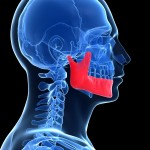
Fracture of the mandibular angle is considered to be the commonest fracture site in the mandible. The best treatment approach for these fractures continues to be debated with fixation being achieved using 1 or two mini- plates.
The aim of this review was to compare outcomes with the use of 1 or 2 miniplates for the treatment of mandibular angle fractures.
Methods
Searches were conducted in the Medline-Ovid, Embase, and PubMed databases. Randomised controlled trials (RCTs), controlled clinical trials (CCTs), prospective and retrospective studies of patients with mandibular fracture published in English were considered. Studies providing sufficient information to derive relative risks (RR) and 95% confidence intervals (CI) were included.
Two reviewers independently selected studies and extracted data. Study quality was assesses using the Cochrane tool. The incidence of postoperative complications and operative times were presented as RR with 95%CIs. Subgroup analyses of the different fracture regions and different miniplate sizes were performed. Publication bias was assessed using a funnel plot.
Results
- 13 studies (3 RCTs, 2 CCTs, 6 retrospective) were included.
- All the patients in the 1 miniplate group received a 2.0-mm titanium miniplate using an intraoral approach at the external oblique ridge with 2 monocortical screws on either side of the fracture line. Patients in the 2 mini-plate group, had a second miniplate inserted near the inferior border of the mandible with transbuccal trocar instrumentation .
- A summary of the meta-analysis comparing 1 versus 2 mini plates is shown in the table below: –
| Outcome 1 v 2 plates | No. of studies | Relative risk | 95% CIs |
| Overall | 13 | 0.67 | 0.51 to 0.88 |
| Infection | 9 | 0.78 | 0.50 to 1.2 |
| Wound Dehiscence | 12 | 0.38 | 0.26 to 0.54 |
| Malocclusion | 4 | 0.42 | 0.14 to 1.25 |
| Hardware Failure | 10 | 0.33 | 0.19 to 0.56 |
| Scarring | 4 | 0.21 | 0.06 to 0.68 |
| Paraesthesia | 4 | 0.47 | 0.47 to 0.86 |
| Non-union | 4 | 0.95 | 0.45 to 2.28 |
Conclusions
The authors concluded: –
the results from the present study have indicated that the use of 1-plate fixation will result in fewer complications in the treatment of MAFs compared with 2-plate fixation. The present study has also provided scientific data to enable surgeons to make evidence-based decisions regarding the best technique.
Comments
The reviewers have searched two databases although they have used to different interfaces to search Medline which can occasionally identify different studies. The search has been restricted to English language studies which means it is likely that relevant studies have been excluded. Only 3 of the included studies were RCTs and all three, along with the remaining studies were considered to be at high risk of bias. In addition, five of the studies included other types of mandibular fractures so complication rates may be overestimated. While the reviews findings suggest that there are fewer complications with 1-plate fixation because the quality of the available evidence is limited the certainty of the evidence must be considered to be low. As the reviewers suggest in the discussion high quality well-reported RCTs of appropriate size and follow-up periods are needed to clarify whether 1 or 2 mini-plates is the best approach.
In 2014 we looked at another review of this question by Al-Mouraissi et al (Dental Elf – 3rd Oct 2014). That review used a broader search strategy with no restrictions on language, so it included a total of 20 studies, 9 of which were RCTs, with 8 of the studies being considered to have a low risk of bias. With the exception of two studies published since 2014 all of the studies included in this new review were included in the Al-Mouraissi review.
Links
Primary Paper
Wusiman P, Abasi K, Maimaitishawuti D, Moming A. Management of Mandibular Angle Fractures Using One Miniplate or Two Miniplate Fixation System: A Systematic Review and Meta-Analysis. J Oral Maxillofac Surg. 2019 Aug;77(8): 1673.e1-1673.e11. doi: 10.1016/j.joms.2019.04.006. Epub 2019 Apr 12. Review. PubMed PMID: 31077670.
Other references
Dental Elf – 3rd Oct 2014
